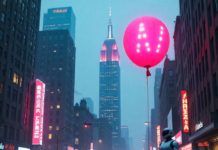MARKET PERSPECTIVE
By J Mulraj
May 13-19, 2023
Are global leaders too myopic to see the future?
It seems as if world leaders, egged on by the deep state, prefer death and destruction to creative disruption. The first half of the image above, to the second. After 450 days of senseless killing and mayhem, the Ukraine war is not over, yet plans are afoot for the next! Such as an invasion of Taiwan by China, which claims it as its own. If the US were to get involved, it could well trigger WW III! Both countries are over-indebted and are in no position to take on the burden of a new conflict. Sadly, neither paucity of funds nor senseless loss of lives, are ever considered before starting a war.
The inanity of this war, in terms of the thousands of dead and maimed soldiers, was soon to pale in comparison to the millions of lives that would be lost due to famine if the Ukraine grain deal was not extended by May 18, when it was set to expire. It was extended, temporarily, for 2 months, by Russia, which, very reasonably made it conditional on getting paid for the grain it exports (main stream media, which controls narratives, did not cover this). Sanctions imposed on Russian banks prevent USD transactions, and Russia asks for sanction be lifted on one bank to enable it to get paid. The collective west is obdurate, an obduracy that would, in conjunction with several regional conflicts, lead to millions, not thousands, of famine deaths in Africa in addition to conflict deaths. Does the myopia of the collective west prevent them from viewing a looming calamity a few months away? Does it prefer destruction, by bombs or hunger, to creative disruption?
Sir Walter Scott was prescient when he stated, in his poem, Patriotism, “breathes there a man with soul so dead, who never to himself hath said, this is my home, my native land..” The global polity has lost its soul.
Other than Xi Jinping, none of the world leaders are talking about, much less pushing for, a negotiated end to the conflict. They are uncaring as long as the bodies in the body bag are Ukranian, not their citizens’. The conflict will thus end once the ground, softened by rains, hardens enough for tanks to roll over, once Ukranian soldiers and citizens get enough war fatigue to press their leaders, and once the collective west, struggling with their own financial woes, gets enough financial fatigue to press Zelensky to go to the negotiating table.
Biden is wrong in blaming the Republicans for a looming debt default, for not raising the debt ceiling unconditionally. They, logically, want commitments on how he would curtail expenditure. He is not wanting to commit to cutting expenditure and seeks to blame Republicans if the US defaults on its debt.
In truth this is politicking, in a dangerous way. There is enough tax revenue to meet all obligations. But not enough to meet obligations plus spending. So, willy nilly, spending HAS to be cut. Biden just doesn’t like being told to do the obvious. He ought to have negotiated spending cuts a month ago.
That’s one story…of destructive wars and foolhardy politicking.
But there is a happier story. One of creative disruption. Watch this video by Tony Seba, whch talks about the coming technology disruptions in 3 areas. Transportation. Energy. Food.
While these will disrupt existing businesses, each will lead to a bright future.
A technology disruption occurs when a new technology, or way of doing things, brings down costs enough to make it economically inevitable. In the early 20th century, the automobile disrupted the horse carriages, the share of automobiles went from 11% to 81% in a decade. During this decade, when disruption occurred, two new industries were established (automobile and oil), new roads were built for the automobiles, World War 1 was fought, and a pandemic (Spanish flu, which killed many more than Covid) was also fought.
So, a technology disruption can take place any time, even now, when a pandemic has been fought and a war is ongoing. That’s eerie.
For a transportation disruption, 3 things need to happen. First, the cost of an electric vehicle (EV) has to fall below an ICE (Internal Combustion Engine) vehicle. The running cost of an EV is already a tenth of an ICE, hence if the purchase cost is lower, the disruption has to happen, for economic reasons.
A Chinese company, BYD, is already offering a $10,000 EV and so, the share of EVs in car sales, already rising, will spurt. The auto industry will be disrupted and stock prices will be impacted.
Second, Level 4 has to be reached in Autonomous vehicles. When this is achieved, local authorities will permit driverless vehicles to be used on public roads. What about safety? Well, Tesla has studied the accident pattern of Tesla’s driven on autopilot, and the number of accidents are nearly 9 times fewer. So, once Level 4 is reached, and driverless vehicles are permitted, it is estimated that 900,000 lives lost in road accidents will be saved.
Third, the start of TAAS, or Transport As A Service. The power train of an EV can last 500,000 miles, about 7X that of an ICE. An individual driver driving 10,000 miles a year does not benefit, as he does not own a car for 50 years. But a fleet does. It has to buy one EV for every 7 ICE.
So Seba predicts that individual ownership of cars will decrease, and ownership by fleets increase. And, because of this, the need for parking will be drastically reduced, and, combined with autonomous vehicles (no driver costs), the cost per mile will come down to 18 cents! He predicts that, by 2030, the number of vehicles sold will fall by 80 %!!
This will be hugely disruptive for the industry, but good for the consumer, who will have TAAS, an on demand, autonomous vehicle service, owned by fleets, at a low cost. The lower demand for parking (almost everyone will use robotaxis, few private cars) will release huge urban spaces. Seba estimates that the space released by lower demand for parking, in California, would be enough to build three cities the size of San Fransisco. Urban planners cab decide how to use the space, as green spaces, or for low cost housing, or commercial real estate, or whatever.
In the Energy sector the cost of power generated by Solar and by Wind is, already, the lowest, compared to oil, coal, gas or nuclear. He believes that a 100% Solar + Wind + Batteries (enough to store 4 hours of consumption) can replace the existing energy infrastructure. To reduce storage requirement, he believes that Solar + Wind capacity installed should be 4 times the current grid, which would be viable as costs have come down. If 4X capacity is newly installed in Solar + Wind, it would cost $2 trillion. Moreover, since capacity installed is 4X it would be able to provide cheap power for all uses.
This sounds too good to be true. However, it is unclear if the uncertainty of nature has been factored in.
The third disruption will be in food and agriculture. Milk is a major (but inefficient) source of protein. The protein can now be developed using precision fermentation (PF). About a third of the revenues of the dairy industry comes from products like protein bars and shakes. If, using PF, these can be produced at a significant cost advantage, the dairy industry will be disrupted. PF will hit price parity with animal protein by 2024-25.
Similarly, meat can be produced using PF and cellular agriculture. It is much more efficient than animal agriculture. It is 5X more energy efficient, 10X more water efficient and 100X more land efficient!
Disruption of the dairy industry will reduce the number of cows required by 50%.
Disruption of animal farming will free up 485 million acres of farmland in America. This freed up land can be used to grow more food.
So technology paints a bright future.
If the polity rids itself of its myopia. Of its warmongering. Of its pettiness. And of its greed.
Last week the Sensex closed at 61729, down 298 points.
India’s largest bank, SBI, produced stellar results, with PAT in Q4 up a jaw dropping 83%. In terms of renewable energy and green hydrogen, India is way ahead. In terms of manufacturing capabilities, it has convinced Apple, (market cap $ 2.8 trillion nearly equal to India GDP f $ 3.2 trillion) to shift part of its IPhone manufacturing to India, no mean achievement.
There is a promising future, led by new technological disruption. For humankind to achieve it, the global polity must discard its destructive mindset.
Will it?
Picture Source: https://www.linkedin.com/pulse/confusing-disruptive-destructive-innovation-peter-wilkinson
Comments may be sent to jmulraj@asiaconverge.com










































COMMENTS